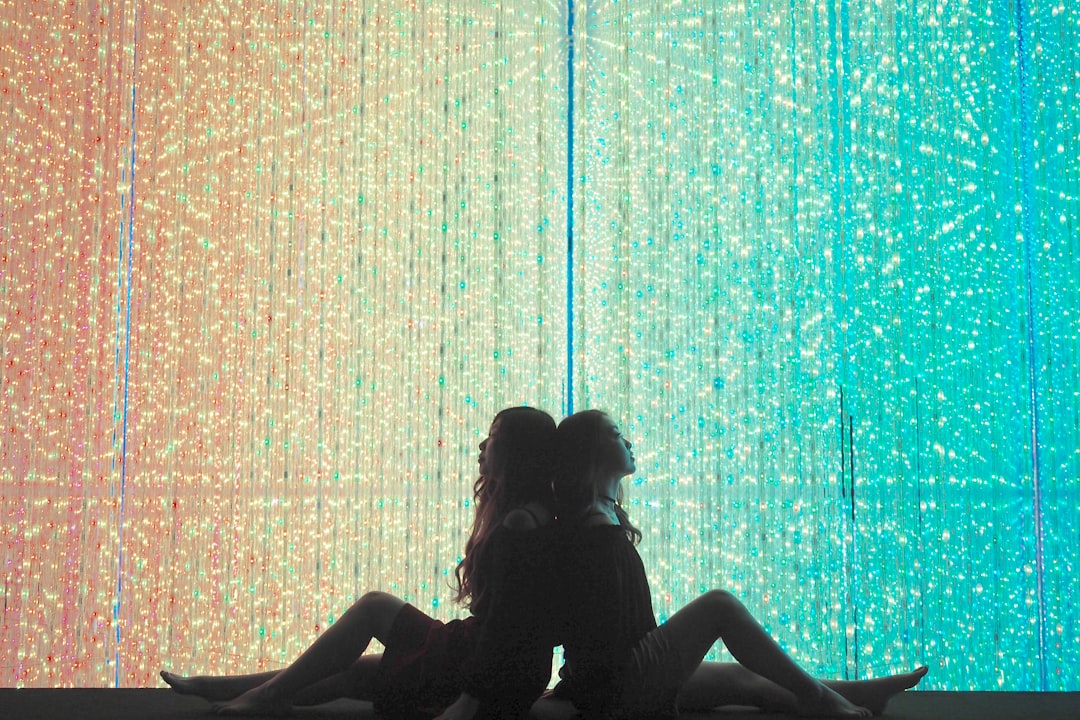Transforming Memories Color Enhances Palliative Conversations
Transforming Memories Color Enhances Palliative Conversations - How revived images alter dialogue
Bringing visual elements back to life can significantly reshape how conversations unfold in palliative care settings. These revived images act as concrete starting points, naturally encouraging the telling of stories and the sharing of personal perspectives that might otherwise be difficult to articulate. This approach offers a distinct pathway to communication, potentially moving beyond the limitations sometimes encountered with purely verbal recall or standard life review processes. By providing a tangible reference, the images can empower individuals to convey their experiences and feelings more fully, giving voice to details and emotions that might remain unexpressed. Consequently, the dynamics of interaction can shift, fostering exchanges that are potentially deeper and more sensitive. While navigating conversations about life and memory in these circumstances is inherently complex, incorporating such visual aids presents a valuable opportunity to enrich dialogue and address communication barriers effectively.
Investigating how photographs brought back to life with color can influence conversations, particularly in settings like palliative care, reveals some intriguing possibilities:
1. Processing aged or black-and-white images can require a certain amount of mental effort; introducing realistic color might lessen this cognitive load, potentially freeing up mental capacity that an individual could then use for accessing and articulating complex recollections and the feelings tied to them.
2. When a photograph appears more true-to-life due to added color, it seems to enhance its perceived accuracy. This subtle shift could bolster a person's confidence in the reliability of the memories associated with that image, potentially leading them to share events with greater detail and assurance.
3. Introducing color can engage specific neural pathways in the visual system wired to process color information and fine details. This engagement might stimulate a more particular and vivid retrieval of events and sensory experiences linked directly to those visual cues in the original moment.
4. Seeing familiar surroundings and objects in their original shades appears capable of triggering associated multi-sensory memories—things like specific smells or textures—that aren't visible in the photograph itself. This could enrich the dialogue with unexpected details and layers of emotional recall.
5. Presenting images with restored color seems to bridge the perceived emotional distance from past experiences, making those memories feel more immediate and accessible for reflection. This might facilitate a deeper and more open flow of conversation, particularly during sensitive discussions.
Transforming Memories Color Enhances Palliative Conversations - Using color to unlock shared history
Reintroducing color into historical images offers a unique avenue for accessing and sharing personal narratives within palliative contexts. This revitalization appears to intensify the link between an individual and their past, potentially making memories feel more accessible and emotionally rich. By adding vibrancy to previously faded scenes, the process can stimulate recall, allowing details and feelings associated with significant life moments to surface with renewed intensity. This engagement with color supports the expression of complex emotions that verbal description alone might struggle to capture, fostering deeper storytelling and facilitating connections between people involved in these important conversations. The interaction of visual color cues with memory can indeed enrich dialogue, potentially paving the way for moments of understanding and comfort during challenging reflections on a life lived.
Exploring the nuances of incorporating color into historical imagery for conversation reveals several thought-provoking possibilities from a cognitive perspective.
One aspect drawing research attention is the potential social dimension. Some evidence tentatively suggests that presenting familiar individuals or settings in realistic color might increase activity in brain areas linked to social processing and empathy. If substantiated by further studies, this neurological engagement could offer a basis for enhancing the emotional connection when individuals review and discuss shared past experiences together.
From a pure memory mechanism standpoint, color functions as a potent cue. Unlike the relatively more generalized visual analysis of monochrome images, specific hues appear capable of reactivating the neural patterns formed during the original moments captured. This targeted re-ignition theoretically makes those specific memory traces more robust and potentially easier for the mind to consciously retrieve and engage with.
The dynamics of shared attention also present an interesting area. Research observing how two minds focus together on complex visuals, like a colorized photograph, indicates that their brain activity might synchronize more closely. While the implications of this "neural coupling" for facilitating deeper shared understanding during conversation are still being explored, it poses questions about how joint visual processing influences communicative alignment.
Furthermore, moving beyond simply evoking broad nostalgia, the particular colors present in a scene seem capable of triggering recollection of more specific emotional states and sensory details directly associated with that exact moment. This allows individuals to articulate more precise feelings and nuances of their past experiences, rather than relying solely on more general sentiment.
Finally, there's the subtle effect on how psychologically distant past events feel. Introducing realistic color can arguably reduce this perceived cognitive distance, making historical instances feel less like remote facts and more like immediate, accessible elements of personal history. This shift in perception could potentially lower the mental barrier required to engage deeply with and articulate these embedded memories.
Transforming Memories Color Enhances Palliative Conversations - Emotional resonance in recolored moments
Infusing past moments captured in photographs with color seems to connect directly with the emotional core of those experiences. Unlike monochrome, color possesses a psychological power, with specific hues and their vibrancy potentially influencing our feelings and how vividly we recall events. Research suggests that warmer tones might amplify feelings of resonance, while the overall intensity can contribute to memories feeling more immediate and impactful. This isn't merely about adding visual detail; it appears to leverage color's capacity to shape our emotional state, making recollections feel more layered and personally significant. In reflective conversations, particularly in challenging life stages, this might facilitate a deeper level of sharing, where individuals feel more able to express the complex emotional texture of their past through the visual prompt. It highlights color's role as a potential emotional catalyst, offering a pathway to engage with personal history not just intellectually, but with heightened feeling. While individual responses to color vary, the link between color intensity, warmth, and the evocation of emotionally rich memories appears a significant area for consideration.
Diving into the potential effects of bringing color back to past visuals, specifically regarding emotional resonance, brings up some interesting hypotheses from a perceptual and cognitive processing angle. It's not simply a matter of aesthetics; the introduction of color might interact with memory and emotion systems in specific ways.
Here are a few potential observations regarding how re-colored moments might influence our emotional engagement with the past:
Observations suggest that specific chromatic details present during an emotionally charged event could potentially function as particularly stable anchors for later retrieving the accompanying affective state. It's almost as if the brain cross-indexes the emotional context with the dominant hues perceived at the time, offering a direct pathway back to that feeling during recall.
Separate from the memory's inherent emotional content, the mere presence of certain hues or palettes in a re-colored image might trigger pre-existing, possibly learned or evolutionarily-based, associations between specific colors and moods. This could prime certain affective networks in the brain, subtly influencing the emotional tone perceived by the viewer even before the memory itself fully crystallizes.
From a visual processing perspective, adding realistic color significantly heightens an image's distinctiveness – its salience. This increased perceptual signal is more effective at capturing and sustaining visual attention compared to monochrome versions. This sustained engagement with the visual stimulus could facilitate a deeper processing of the associated memory, potentially strengthening the accessibility of its emotional layer simply due to prolonged mental focus.
Current thinking about episodic memory formation highlights the crucial role of binding together various features like sensory input, spatial layout, and emotional context into a unified trace. By reintroducing what is perceived as accurate color, we might be reinforcing the structural integrity of these stored memory ensembles, theoretically making the interconnected emotional component more robust and easier to retrieve coherently. Of course, 'accurate' here is a complex term given the subjective nature of original perception and the limitations of restoration.
There's a line of research exploring how engaging with personally significant visual material, especially that tied to impactful experiences, might involve neural reward pathways. Re-presenting these memory triggers in a perceptually richer form, like with color, could theoretically enhance this process, potentially fostering deeper engagement and exploration of emotionally significant moments, although the precise neurological mechanisms at play warrant careful study.
Transforming Memories Color Enhances Palliative Conversations - Integrating visual pasts into care discussions
Introducing visual elements from an individual's past into palliative care discussions presents a method for engaging in conversation and potentially connecting. Utilizing personal photographs or similar visual aids can serve as tangible anchors, potentially helping people access and voice personal narratives that might be challenging to initiate or express through purely verbal means alone. This approach holds the promise of encouraging more detailed storytelling and enabling a broader discussion of the emotional layers associated with significant life experiences. The presence of these visual reminders may bring past events into a more immediate focus, potentially making reflections feel less remote and more accessible for current discussion. Weaving visual records into these conversations is intended to support dialogue and contribute to creating an environment where reflections can be explored, though the specific utility and individual response will undoubtedly vary.
Investigating how incorporating visual history, potentially enhanced with techniques like colorization, might influence discussions in care settings reveals several facets from a researcher's perspective.
1. Initial observations suggest that viewing personally relevant images can elicit subtle physiological responses, such as shifts in skin conductance or heart rate, hinting at underlying, non-conscious processing of emotional content tied to those visuals.
2. These visual cues appear capable of serving as scaffolds for autobiographical recall, potentially aiding individuals in organizing memories into more coherent narrative structures, be it chronologically or thematically, which can support facilitated conversation.
3. Beyond conscious verbal descriptions, engaging with rich historical imagery might tap into implicit forms of memory, potentially manifesting as subtle physical reactions, postures, or gestures that convey emotional residues linked to past events.
4. While the direct link is debated, engaging vividly with a reconstructed past may, in some instances, support an individual's broader ability to integrate their life story and potentially inform their current state and consideration of future preferences or goals. The specific role of added color in this complex process remains an area requiring cautious interpretation.
5. From a perceptual efficiency standpoint, the reintroduction of perceived accurate color could provide additional features that assist the visual system in more rapidly identifying known elements within an image, potentially reducing the time lag in accessing related spatial or contextual memories during discussion.
More Posts from colorizethis.io:
- →The Psychology of Space Exploration What Rosetta's Ambition Film Reveals About Human Drive and Scientific Achievement
- →Michael Fossel's Perspective on Reversing Aging
- →Exploring Transhumanism Insights from Ryan Harding's Future Dimensions
- →The Convergence of HUMINT and OSINT Redefining Intelligence Gathering in the Digital Age
- →Virtual Reality and Family Dynamics Lessons from The Nostalgist for Modern Entrepreneurs
- →The Anthropological Implications of Singularity University's Exponential Growth Theory

